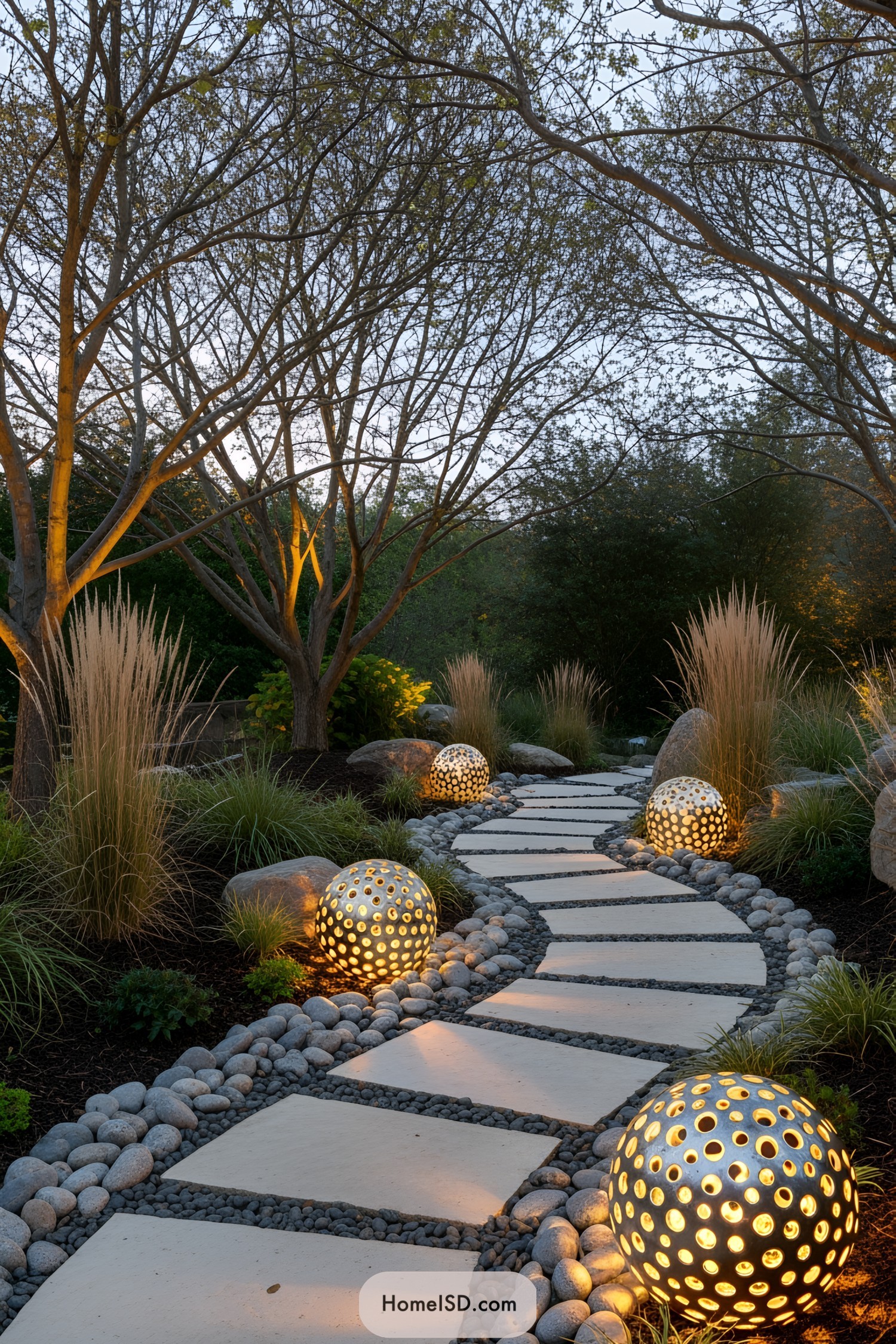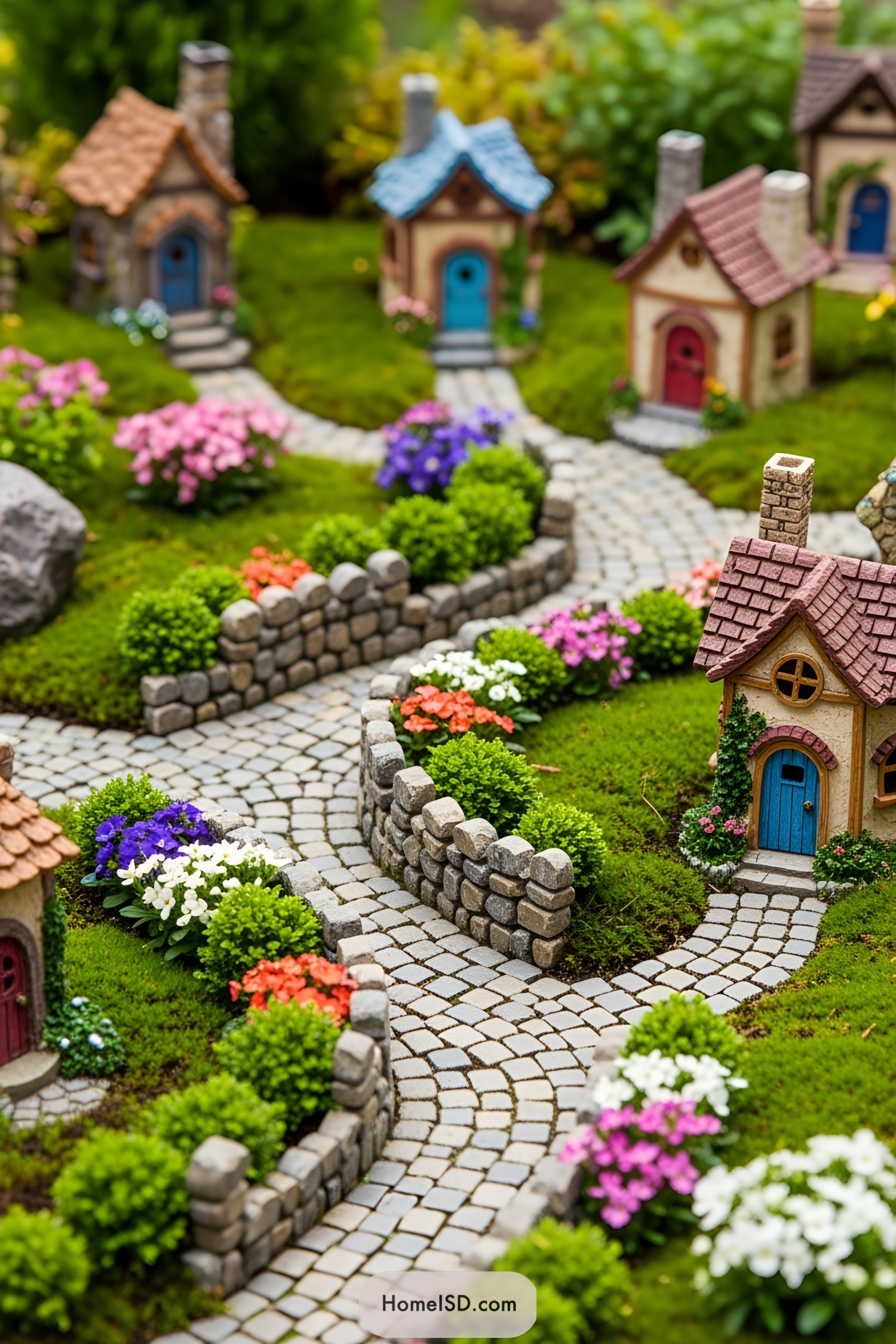Last updated on
A fire pit may smoke excessively due to factors such as damp wood, poor airflow, or improper construction.
Have you ever gathered around a cozy fire pit with friends and family, only to be engulfed in a cloud of smoke? It’s not exactly the ambiance you were going for, right? A smoking fire pit can quickly put a damper on your outdoor gathering and leave you wondering what went wrong. But fear not! In this article, we’ll explore the reasons why your fire pit might be smoking so much and provide some tips on how to fix it.
So grab a seat (preferably upwind) and let’s get started!
Key takeaways:
- Damp or wet wood causes excessive smoke.
- Insufficient airflow leads to incomplete combustion and more smoke.
- Choose hardwoods like oak and maple for less smoke.
- Properly season firewood to reduce smoke production.
- Avoid burning trash or treated wood to prevent toxic fumes.
Causes of Excessive Smoke

One of the most common reasons for excessive smoke from a fire pit is using damp or wet wood. When you burn wet wood, it produces more smoke and less heat, which can lead to an unpleasant experience.
Another reason could be burning green or unseasoned wood that hasn’t had enough time to dry out properly.
Burning yard debris such as leaves and grass clippings can also cause excessive smoke due to their high moisture content. Similarly, burning trash in your fire pit is not only illegal but also dangerous and produces toxic fumes.
Insufficient airflow around the fire pit can cause incomplete combustion leading to excess smoke production too. Blocked air vents or improper ventilation are other factors that contribute significantly towards smoking issues with your fire pits.
Lastly, overfeeding the flames with too much fuel at once will create a smoky mess instead of a cozy ambiance you were hoping for!
Types of Firewood
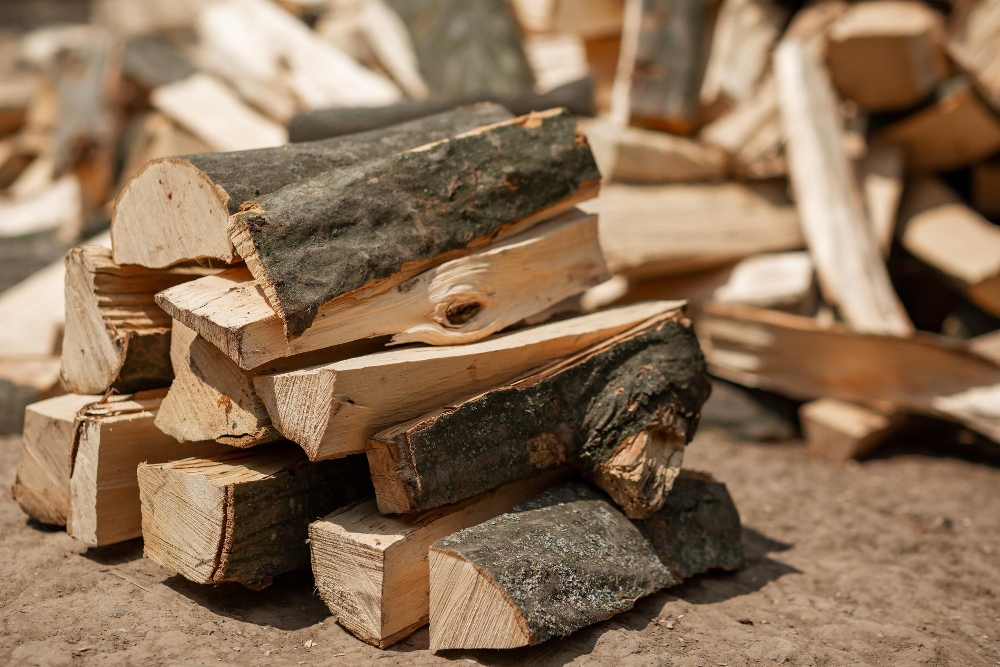
Some types of wood are naturally denser and produce less smoke, while others contain more sap or resin that can create excessive amounts of smoke.
Hardwoods like oak, maple, and hickory are excellent choices for fire pits because they burn hotter and longer than softwoods like pine or spruce. They also produce less creosote buildup in your chimney or flue.
If you’re looking for a specific aroma from your firewood, fruit trees such as apple or cherry provide a sweet scent when burned. However, keep in mind that some woods may not be readily available depending on where you live.
It’s essential to choose the right type of wood based on its density and moisture content to ensure optimal burning conditions with minimal smoking issues.
Correct Wood Choices
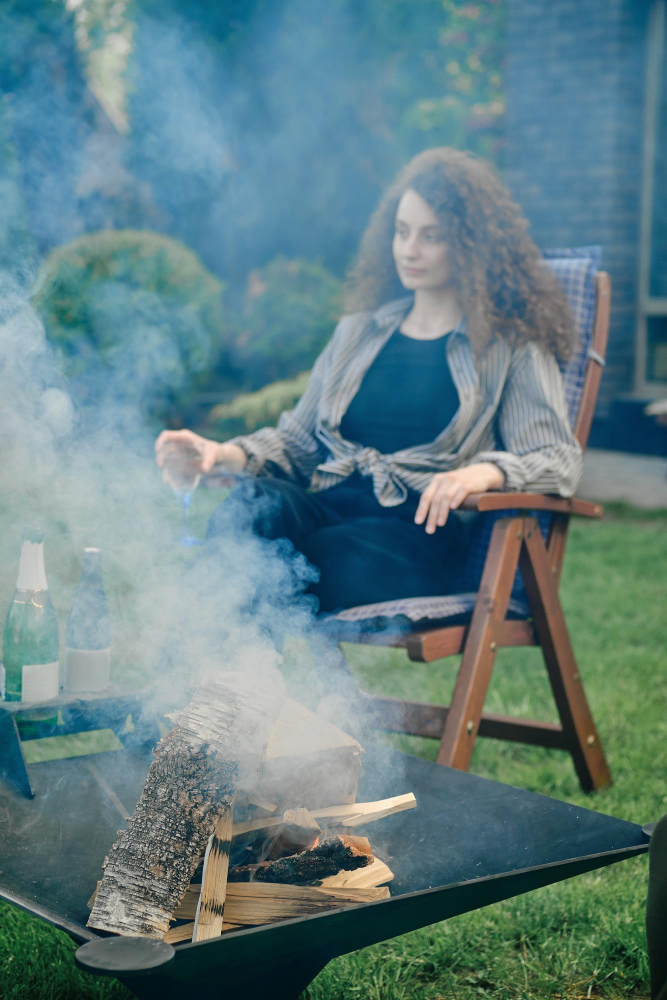
Softwoods like pine, spruce, and cedar may be readily available and easy to light but tend to produce more smoke than hardwoods. Hardwoods such as oak, hickory, or maple burn hotter and longer with less smoke.
When selecting wood for your fire pit, avoid using treated lumber or painted scraps that contain chemicals that can release harmful fumes when burned. Instead opt for natural woods from sustainable sources.
It’s also essential to ensure the wood is dry before burning it; wet or greenwood will produce excessive amounts of thick white smoke which could ruin an otherwise perfect evening around the firepit.
Smokeless Firewood Types
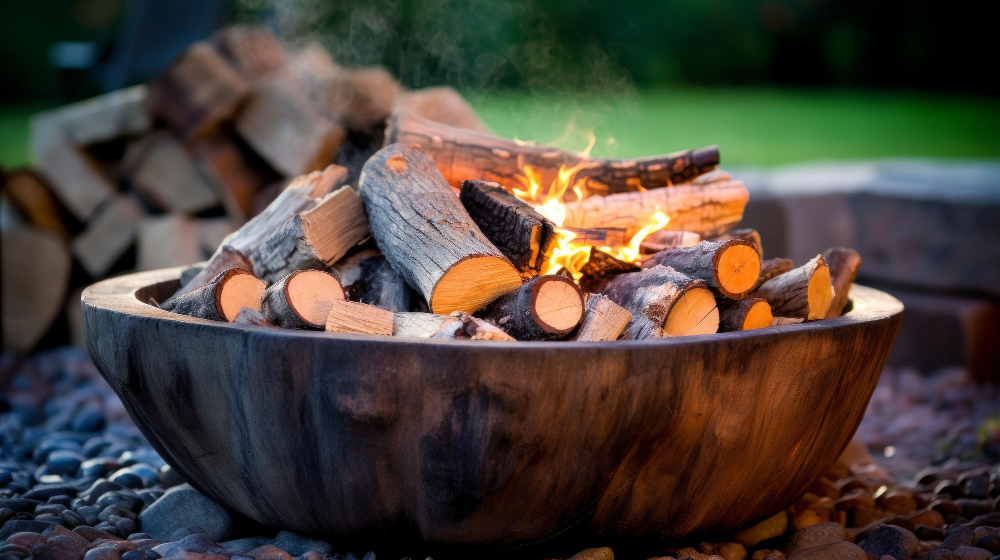
Some types of wood produce more smoke than others due to their moisture content and resin levels. Here are some examples of smokeless firewood types that can help reduce excessive smoking in your outdoor fireplace:
1) Oak: This hardwood burns slowly and produces minimal amounts of smoke.
2) Maple: Another hardwood option that burns cleanly with little to no visible emissions.
3) Cherry: A fruit tree wood that has a sweet aroma when burned, producing very little ash or soot.
4) Apple: Similar to cherry, apple wood also has a pleasant scent when burned and creates minimal amounts of ash or soot.
5) Ash: This dense hardwood is known for its low moisture content which makes it an excellent choice for clean-burning fires with less visible emissions.
By selecting one or more from these options instead of softwoods like pine or cedar, you’ll be able to enjoy your outdoor gatherings without worrying about excessive smoking ruining the ambiance.
Wet Wood Issues

When you burn damp or wet wood, it produces more smoke than dry wood because the moisture in the logs turns into steam and creates additional combustion byproducts.
If you’re using freshly cut or greenwood, it’s likely to be too moist to burn correctly. It would help if you allowed your firewood to season properly before burning them in your fire pit.
Seasoning involves drying out the logs until they reach an optimal moisture level of around 20%. This process can take up to six months depending on where and how long they are stored.
Another issue with wet wood is that it can cause creosote buildup inside your chimney or flue over time, which could lead to a dangerous chimney fire if left unchecked.
Mold or Fungus On Wood
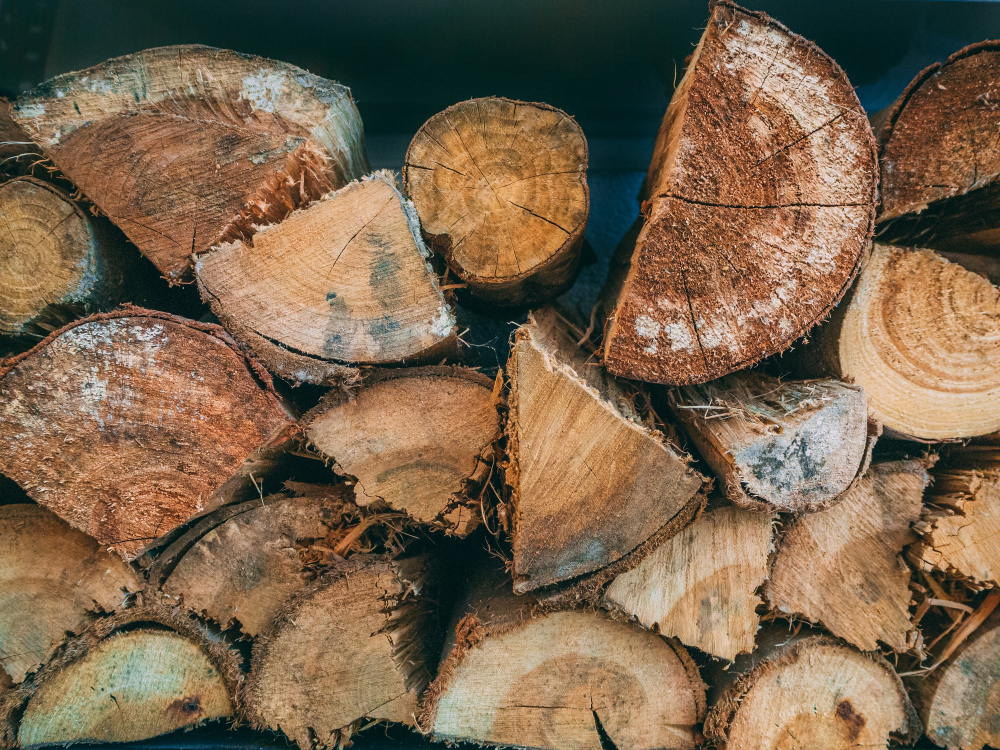
Burning this wood can cause excessive smoke and even release harmful toxins into the air. It’s important to inspect your firewood before burning it to ensure that there is no visible mold growth.
To prevent mold from growing on your firewood, make sure to store it in a dry location with good airflow. Avoid stacking wood directly on the ground where moisture can seep up from the soil and onto the logs.
If you notice any signs of mold growth on your fire pit itself (such as black spots), be sure to clean them off thoroughly before starting a new fire. Mold spores can become airborne when heated and pose health risks when breathed in by humans or pets.
Damp or Wet Firewood
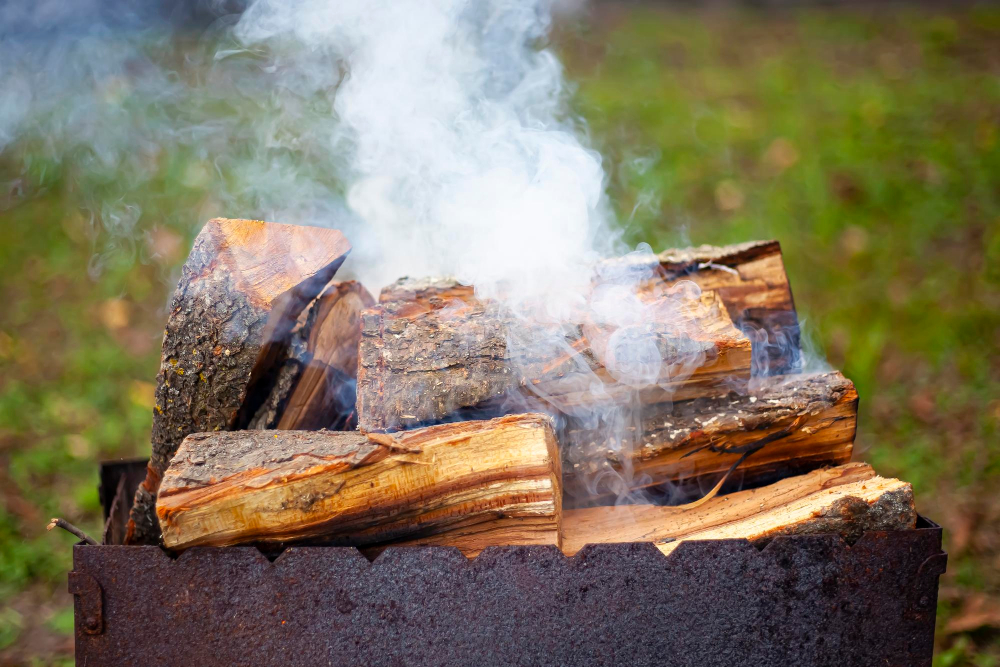
Burning wood that hasn’t been properly seasoned can lead to excessive smoke and poor combustion. When wood isn’t dried out completely, it contains moisture that turns into steam when heated, causing the wood to smolder instead of burn cleanly.
To avoid this problem, make sure you’re using dry and well-seasoned firewood in your pit. Properly seasoned wood has a moisture content of less than 20%, which means it burns hotter and produces less smoke.
If you’re unsure whether your firewood is dry enough to use, try knocking two pieces together – if they produce a sharp cracking sound rather than dull thud-like noise then they are good for burning. If not then store them in an airy place until ready for use.
Green or Unseasoned Wood

Green wood has a high moisture content, which causes it to produce more smoke when burned. It also burns less efficiently, resulting in lower temperatures and more creosote buildup in your chimney.
Unseasoned wood refers to freshly cut logs that have not been allowed to dry out properly. This type of wood can contain up to 50% water by weight, making it difficult to ignite and causing it to smolder instead of burn cleanly.
To avoid these issues, always use well-seasoned firewood with a moisture content below 20%. You can tell if your firewood is seasoned by checking its color (it should be grayish), weight (it should feel light), and sound (when two pieces are knocked together they should make a hollow sound).
If you’re unsure about the quality of your firewood, consider purchasing kiln-dried logs from reputable suppliers as an alternative option.
Adequately Seasoned Firewood

Freshly cut wood contains up to 50% water, which causes it to produce more smoke when burned. Adequately seasoned firewood has been dried out for at least six months and has a moisture content of around 20%.
This type of wood burns hotter and produces less smoke than green or unseasoned varieties.
To ensure that your fire pit is producing minimal amounts of smoke, make sure you’re using properly seasoned hardwoods like oak, maple, hickory or ash. Avoid softwoods such as pine because they contain high levels of resin that can cause creosote buildup in chimneys and flues.
If you’re unsure whether your firewood is adequately seasoned or not, there are several ways to test it. One method involves banging two pieces together; if they make a sharp cracking sound instead of dull thuds then the wood may be dry enough for use in your fireplace.
Firewood Sourcing
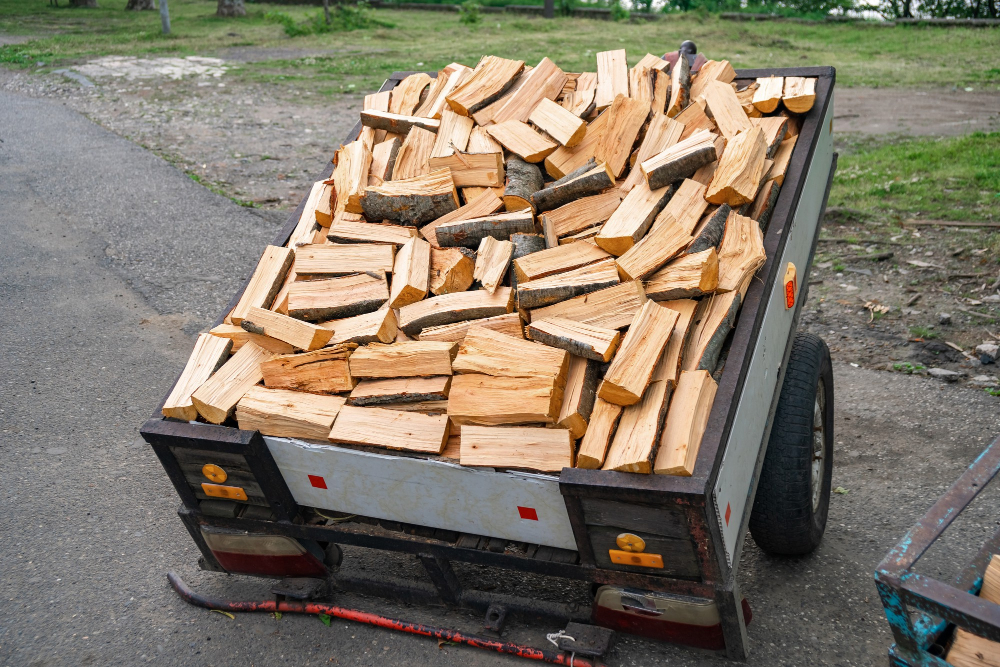
If you’re using wood that’s been treated with chemicals or painted, it will release toxic fumes when burned, which is not only harmful to the environment but also dangerous for those around it. Therefore, always avoid burning scrap lumber or any other type of chemically treated wood.
When sourcing firewood for your pit, make sure to purchase from reputable dealers who sell properly seasoned and dried hardwoods like oak and maple. These types of woods burn hotter and cleaner than softwoods like pine or spruce.
Another option is to collect fallen branches from trees on your property if you have them available. However, be sure they are dry before use as damp wood produces more smoke than dry ones.
Wood Storage Tips
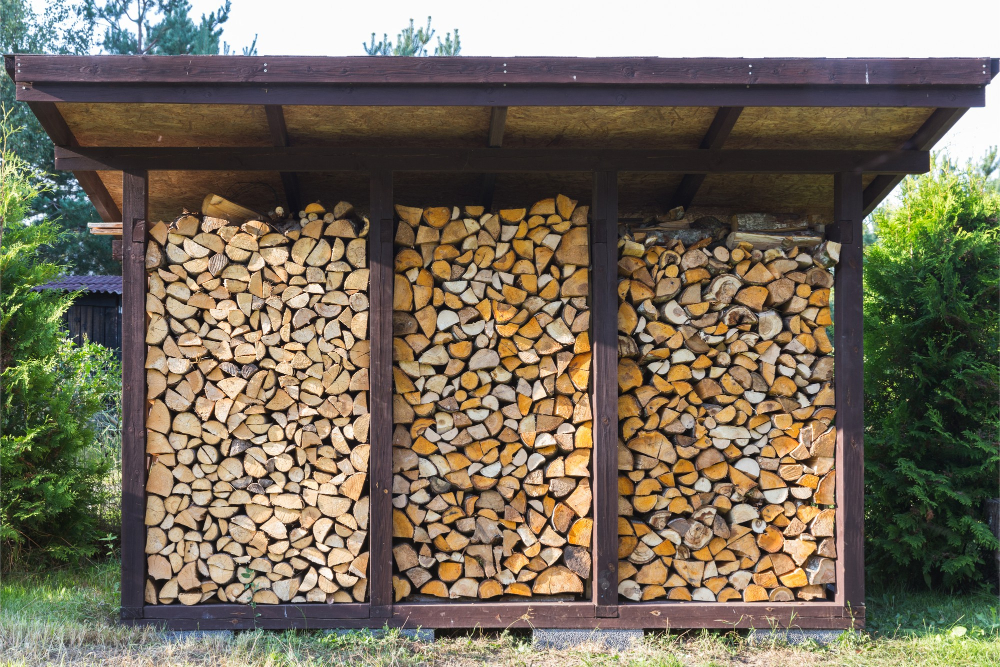
Here are some wood storage tips to keep in mind:
1. Keep the wood dry: Store your firewood off the ground, preferably on a raised platform or rack, and cover it with a tarp or other waterproof material.
2. Allow for proper airflow: Stacking your firewood too tightly can prevent air from circulating around it, leading to moisture buildup and mold growth.
3. Choose a sunny location: Positioning your woodpile in an area that receives plenty of sunlight can help speed up the drying process.
4. Rotate regularly: To ensure even drying, rotate your logs every few weeks so that those at the bottom of the pile have time to dry out as well.
Overfeeding and Wrong Fuels
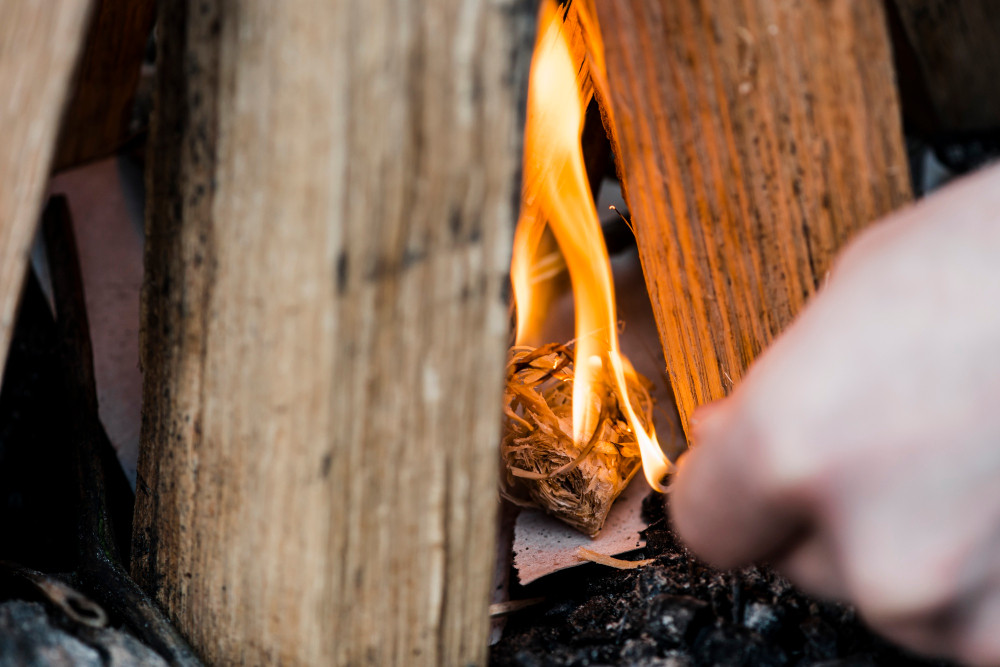
It’s important to remember that a little goes a long way when it comes to fueling your fire. Overloading the pit with too much wood or other materials can lead to incomplete combustion, which produces more smoke than necessary.
Certain types of fuels are not suitable for use in a fire pit and should be avoided altogether. For example, burning yard debris such as leaves or grass clippings may seem like an easy way to dispose of them but they produce thick smoke that is harmful both for you and the environment.
Similarly, burning trash such as plastics or treated wood releases toxic chemicals into the air which pose serious health risks if inhaled over time. Stick with natural woods like oak or maple instead – they burn cleaner and hotter than softwoods like pine.
Burning Yard Debris
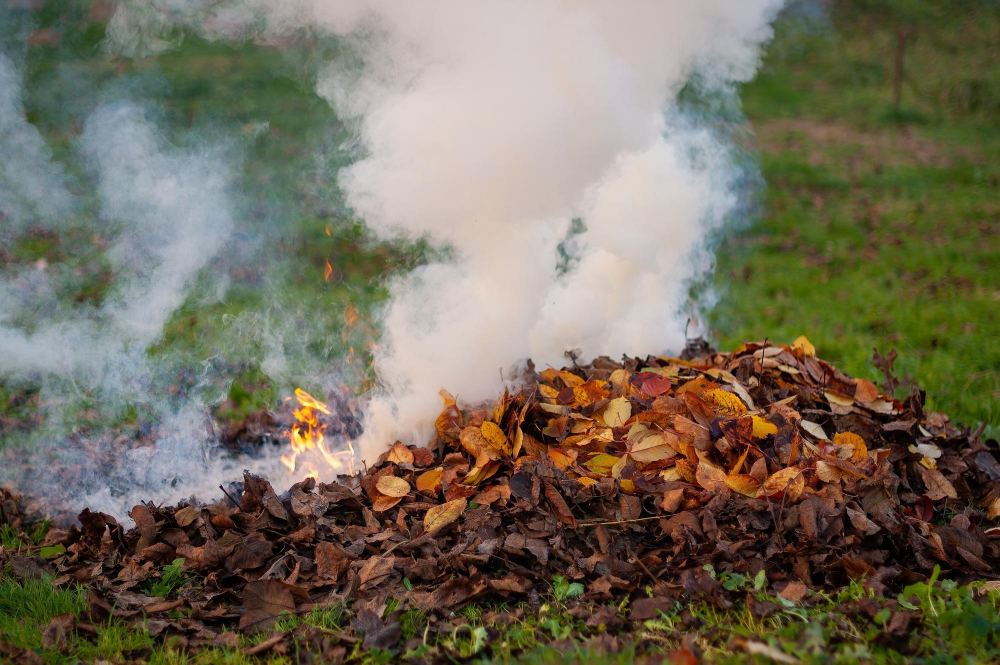
While it may seem like an easy way to dispose of leaves, branches, and other yard waste, burning these materials can release harmful pollutants into the air and create thick smoke that lingers for hours.
If you must burn your yard debris, make sure to do so in a designated area away from your fire pit. Check with local authorities first to ensure that burning is allowed in your area and follow any regulations or guidelines they provide.
It’s also important to note that burning trash or treated wood should never be done as this can release toxic chemicals into the air which are hazardous for both human health and the environment.
Burning Trash
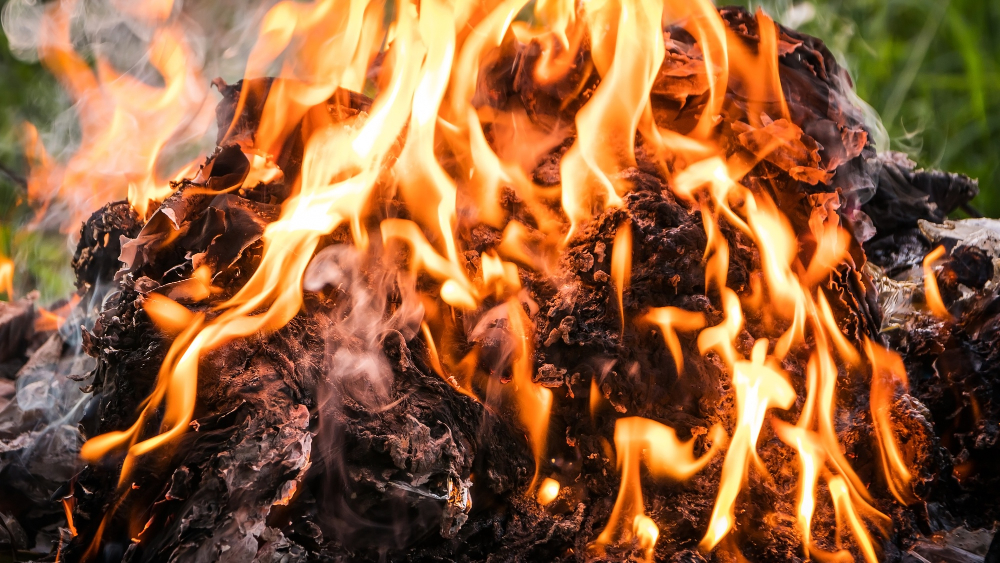
Burning plastic, rubber, or other synthetic materials can release toxic fumes that are harmful to your health and the environment. Burning paper products like cardboard or newspaper can create excessive smoke and ash buildup in your fire pit.
If you’re looking for ways to dispose of household waste safely and responsibly, consider recycling or composting instead. Many communities offer curbside pickup for recyclable materials such as glass bottles, aluminum cans, and cardboard boxes.
Composting is another eco-friendly option that allows you to turn food scraps into nutrient-rich soil for gardening purposes.
Insufficient Airflow
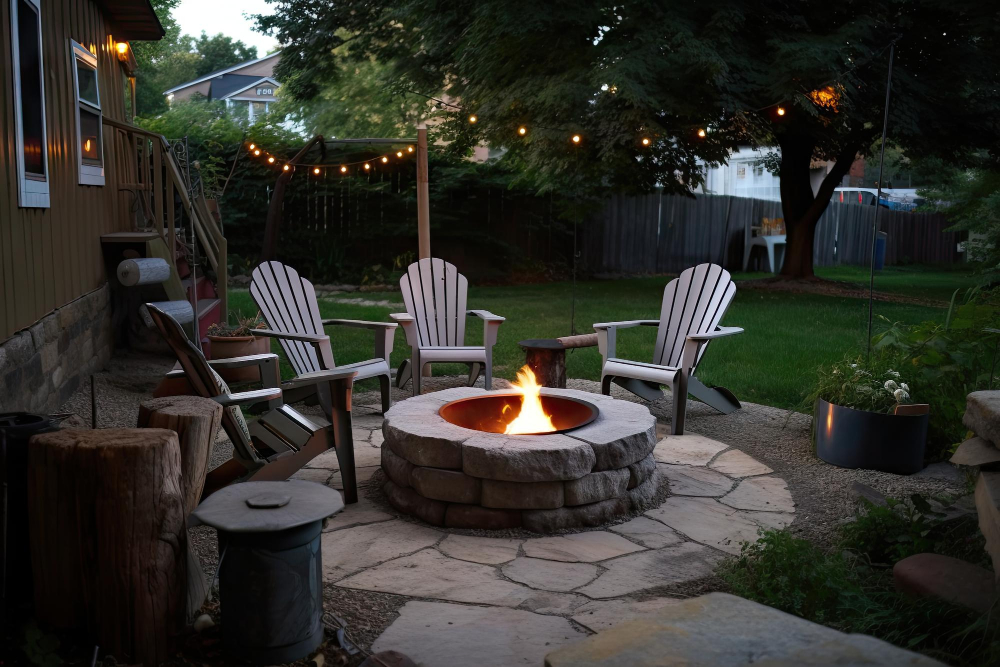
Without proper ventilation, the smoke has nowhere to go but up and out into your face. If you’re using a covered or enclosed fire pit, make sure it has adequate vents to allow air in and smoke out.
If you have an open-air fire pit, consider its location. Is it too close to walls or other structures that could be blocking the airflow? Are there any trees overhead that could be obstructing the natural flow of air? Make sure your fire pit is positioned in an area with plenty of space around it for optimal ventilation.
If you’re using damp wood (which we’ll discuss later), this can also contribute to poor airflow as wet wood doesn’t burn as efficiently as dry wood does. So not only will damp wood produce more smoke than dry wood but also restricts oxygen supply leading to incomplete combustion which results in even more smoking.
Blocked Airflow Problems
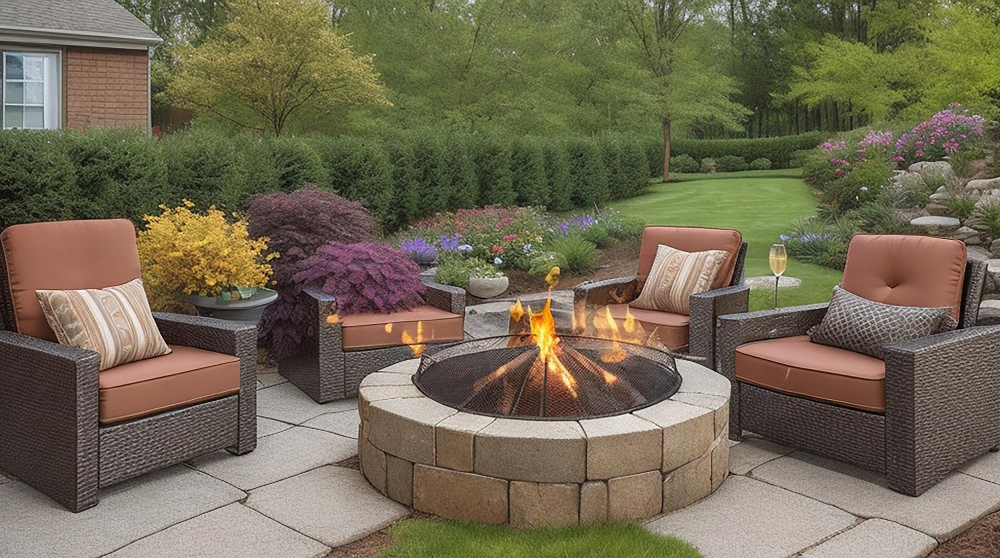
If your fire pit doesn’t have enough air, it can create an incomplete combustion process that leads to more smoke. One way to ensure adequate airflow is by keeping the vents or chimneys clear of debris and ash buildup.
If you’re using a metal fire pit with mesh screens, make sure they are clean and free from any obstructions like leaves or twigs. Avoid placing your firewood too close together as this can restrict the flow of oxygen needed for proper burning.
In some cases, you may need to adjust the position of your firewood within the pit itself so that it’s not blocking any vents or other openings designed for ventilation purposes.
Improper Ventilation
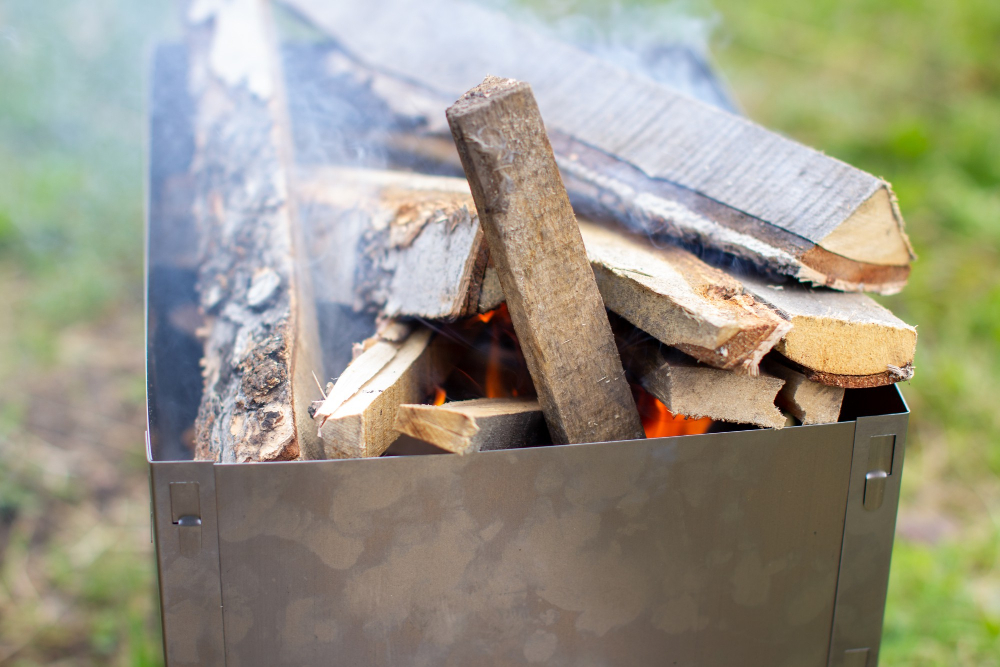
If the smoke has nowhere to go, it will linger around the fire and create a cloud of smoke that can quickly become overwhelming.
To ensure proper ventilation, make sure your fire pit is located in an open area with plenty of space around it. Avoid placing it near walls or under low-hanging trees or structures that could block airflow.
Consider investing in a fire pit with built-in vents or chimneys designed to direct smoke away from you and your guests. These features not only help reduce excessive smoking but also improve overall air quality for everyone gathered around the flames.
Fire Pit Location
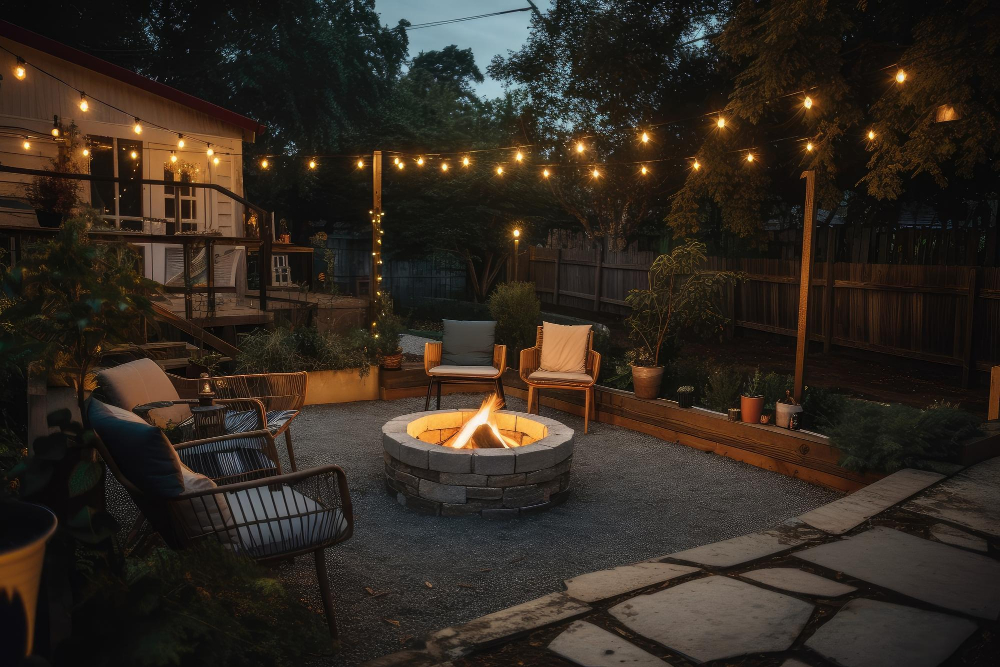
If your fire pit is too close to your home or other structures, the smoke can easily drift inside and cause problems. It’s important to choose a spot that’s far enough away from any buildings or trees so that the smoke has room to disperse.
Wind direction plays a significant role in where you should place your fire pit. You don’t want the wind blowing directly towards seating areas or into neighboring yards.
Consider placing your fire pit on level ground with no overhanging branches nearby and at least 10 feet away from any structure for safety reasons. This will help ensure proper airflow around the flames and minimize excessive smoking issues.
Smokeless Fire Pit Options
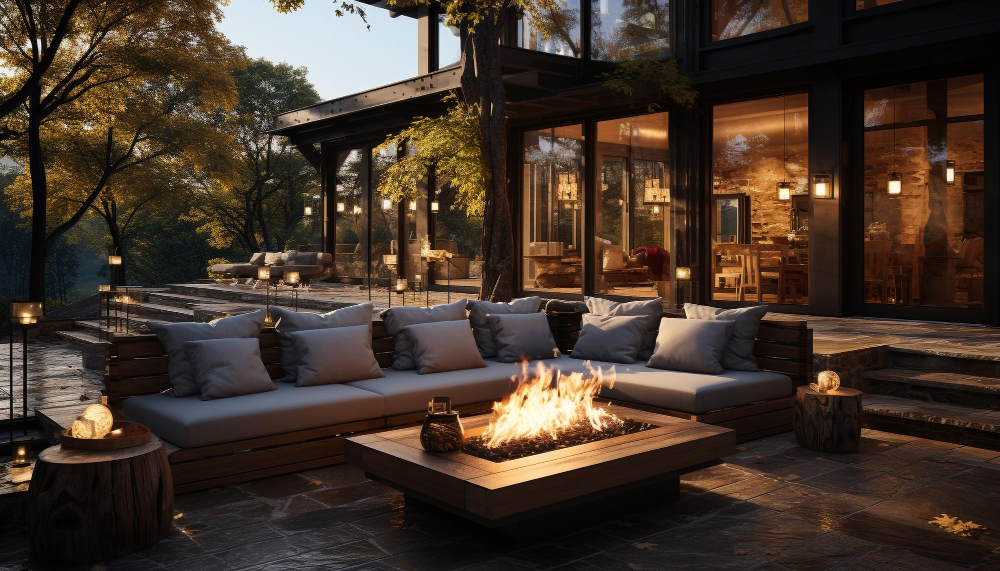
One popular choice is a gas-powered fire pit. These pits use propane or natural gas as fuel and produce no smoke at all.
They also require very little maintenance and can be turned on and off with the flip of a switch.
Another option is to choose a fire pit with better ventilation or airflow design, which helps to reduce the amount of smoke produced during burning wood. Some models come equipped with fans that help circulate air around the flames, while others have specially designed chimneys that draw smoke away from your seating area.
Consider investing in an eco-friendly bioethanol-fueled fire pit if you want an even more sustainable option than traditional wood-burning pits without sacrificing warmth or ambiance.
Regular Pit Cleaning
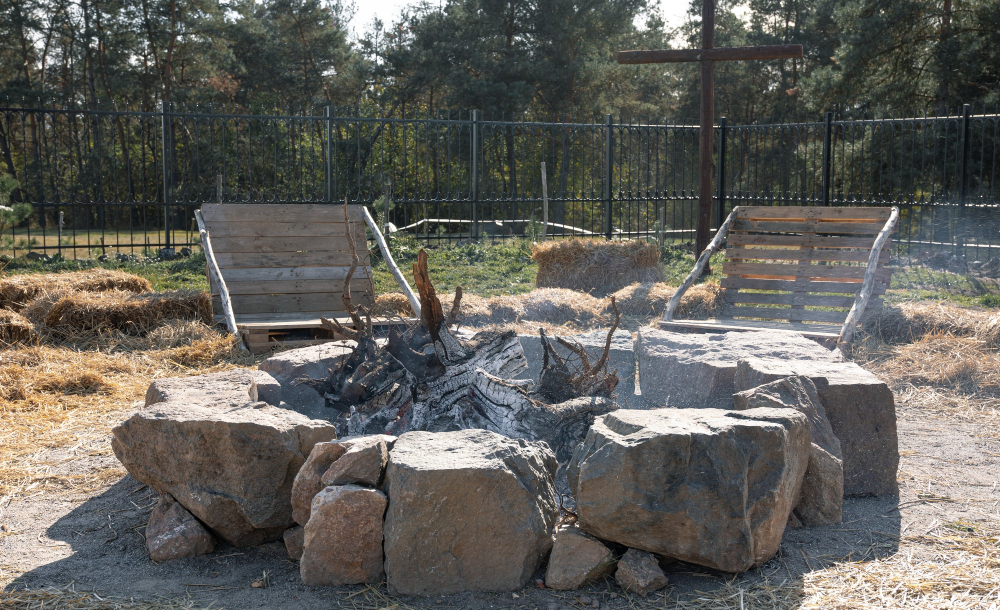
Ash buildup and debris can block airflow, leading to excessive smoke production. To prevent this from happening, make sure to clean out your fire pit after each use.
Start by removing any remaining wood or charcoal pieces using a metal shovel or tongs. Then scoop out the ash and debris using a metal bucket or ash pan.
Be sure to wear gloves as you handle hot materials.
Once you’ve removed all of the ashes and debris from your fire pit, give it a good scrubbing with warm soapy water (dish soap works well). Rinse thoroughly with water afterward.
If there are stubborn stains on the inside of your fire pit that won’t come off with soap and water alone, try using baking soda mixed into a paste-like consistency instead of harsh chemicals that could damage its surface.
By cleaning up after every use properly, you’ll ensure optimal performance for years to come while reducing excess smoke production in future fires!
FAQ
How do I stop my outdoor fireplace from smoking?
To stop your outdoor fireplace from smoking, build your fire upside down by placing a layer of kindling on top of the stack and adding sheets of newspaper, enabling the fire to burn cleaner as smoke doesn’t pass through cold logs.
Is it bad to breathe in fire pit smoke?
Yes, breathing in fire pit smoke is bad as it creates air pollution that is harmful, particularly for those with asthma or other respiratory conditions.
Why is my fire smoking?
Your fire is smoking due to factors such as sudden temperature changes, windy conditions, negative room pressure, chimney faults, chimney length, incorrect lighting, or poor quality firewood.
What factors contribute to excessive fire pit smoke?
Excessive fire pit smoke can be attributed to factors such as damp or unseasoned wood, poor airflow, and inappropriate pit design.
What types of firewood are less likely to produce too much smoke in a fire pit?
Firewood types less likely to produce too much smoke in a fire pit include hardwoods such as oak, hickory, and maple.
How can proper fire pit maintenance reduce excessive smoke production?
Proper fire pit maintenance reduces excessive smoke production by ensuring good airflow, using dry wood, and regularly removing ashes which helps in promoting more efficient and cleaner burning.
Recap
